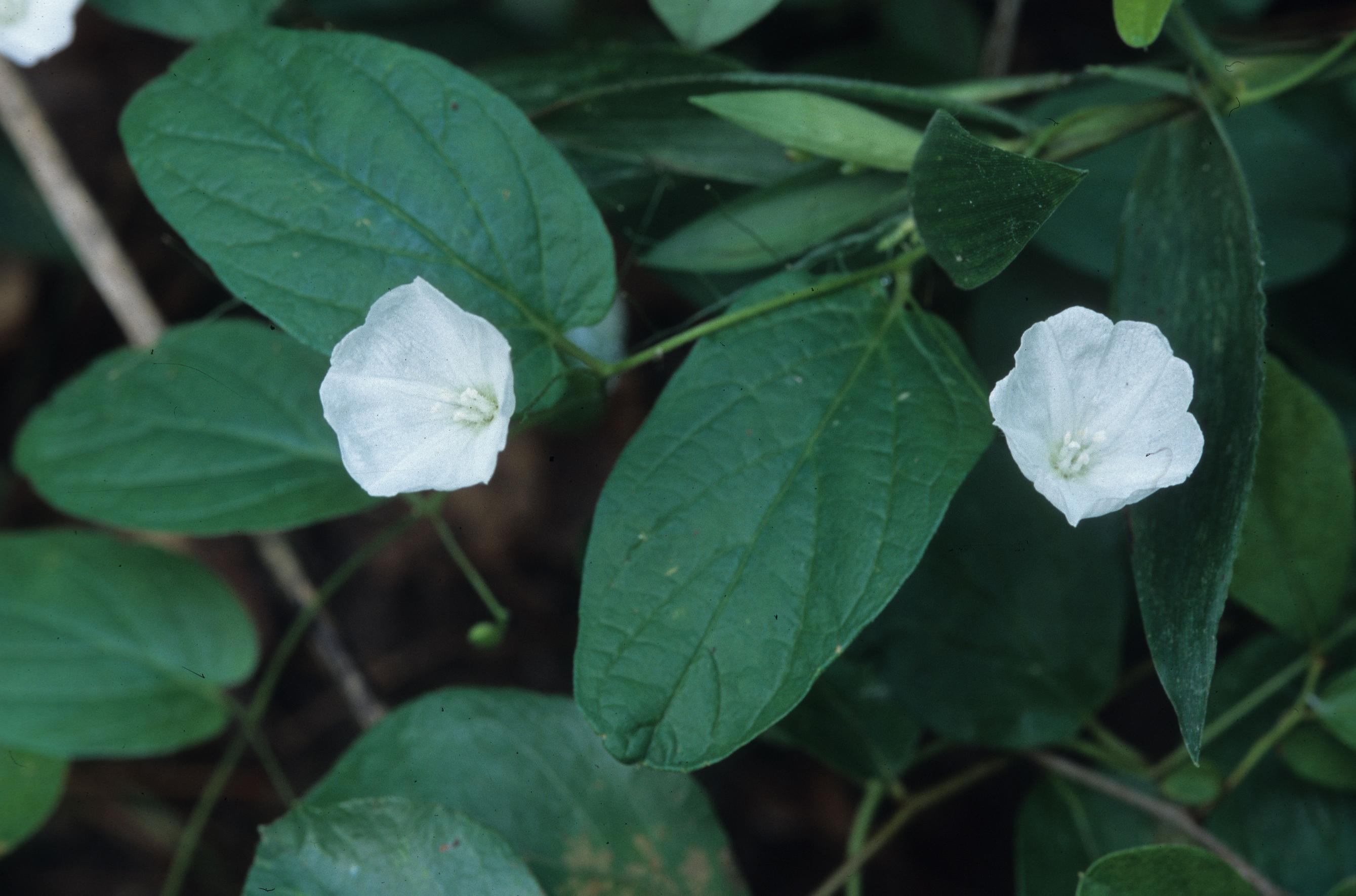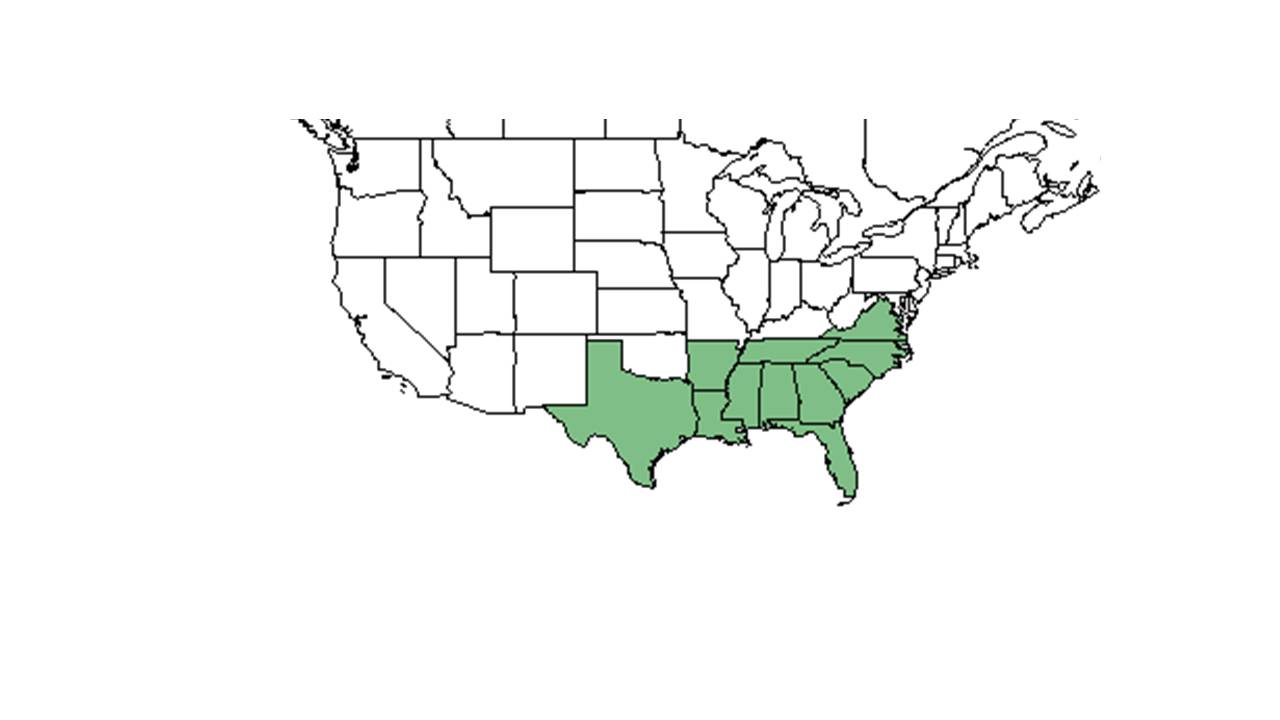Difference between revisions of "Stylisma humistrata"
KatieMccoy (talk | contribs) |
KatieMccoy (talk | contribs) |
||
| Line 28: | Line 28: | ||
==Ecology== | ==Ecology== | ||
===Habitat=== <!--Natural communities, human disturbed habitats, topography, hydrology, soils, light, fire regime requirements for removal of competition, etc.--> | ===Habitat=== <!--Natural communities, human disturbed habitats, topography, hydrology, soils, light, fire regime requirements for removal of competition, etc.--> | ||
| − | ''Stylisma humistrata'' can be found in longleaf pine-oak woodlands, longleaf pine-wiregrass-scrub oak ridges, annually burned pinelands, mesic woodlands, floodplains, hardwood hammocks (FSU Herbarium), and subxeric and xeric areas in longleaf pine-oak communities (Carter et al. 2004). It can also be found along roadsides, edges of cornfields, recently logged oak-pine | + | ''Stylisma humistrata'' can be found in longleaf pine-oak woodlands, longleaf pine-wiregrass-scrub oak ridges, annually burned pinelands, mesic woodlands, floodplains, hardwood hammocks (FSU Herbarium), and subxeric and xeric areas in longleaf pine-oak communities (Carter et al. 2004). It can also be found along roadsides, edges of cornfields, recently logged oak-pine slopes, and old fields. Soil types include loamy sand, loam, and red sandy clay (FSU Herbarium). Associated species include ''Spigelia gentianoides'' and ''Quercus incana'' (FSU Herbarium). |
===Phenology=== <!--Timing off flowering, fruiting, seed dispersal, and environmental triggers. Cite PanFlora website if appropriate: http://www.gilnelson.com/PanFlora/ --> | ===Phenology=== <!--Timing off flowering, fruiting, seed dispersal, and environmental triggers. Cite PanFlora website if appropriate: http://www.gilnelson.com/PanFlora/ --> | ||
Revision as of 14:56, 12 October 2015
| Stylisma humistrata | |
|---|---|

| |
| Photo was taken by Gil Nelson | |
| Scientific classification | |
| Kingdom: | Plantae |
| Division: | Magnoliophyta – Flowering plants |
| Class: | Magnoliopsida – Dicotyledons |
| Order: | Solanales |
| Family: | Convolvulaceae |
| Genus: | Stylisma |
| Species: | S. humistrata |
| Binomial name | |
| Stylisma humistrata (Walter) Chapm. | |

| |
| Natural range of Stylisma humistrata from USDA NRCS Plants Database. | |
Common name: southern dawnflower
Contents
Taxonomic notes
Description
Distribution
It is found in the Coastal Plains of southwestern Georgia (Baker County) (Kirkman et al 2004).
Ecology
Habitat
Stylisma humistrata can be found in longleaf pine-oak woodlands, longleaf pine-wiregrass-scrub oak ridges, annually burned pinelands, mesic woodlands, floodplains, hardwood hammocks (FSU Herbarium), and subxeric and xeric areas in longleaf pine-oak communities (Carter et al. 2004). It can also be found along roadsides, edges of cornfields, recently logged oak-pine slopes, and old fields. Soil types include loamy sand, loam, and red sandy clay (FSU Herbarium). Associated species include Spigelia gentianoides and Quercus incana (FSU Herbarium).
Phenology
Seed dispersal
Seed bank and germination
Jayasuriya and his team found out that water uptake by manually scarified seeds was about 30 times greater than water uptake by non-treated seeds (2008)! This shows that S. humistrata exhibits physical seed dormancy. It does not require light for germination (Jayasuriya 2008).
Fire ecology
Pollination
Use by animals
Diseases and parasites
Conservation and Management
Cultivation and restoration
Photo Gallery
References and notes
- Carter, R. E., M. D. MacKenzie, D. H. Gjerstad and D. Jones. 2004. Species composition of fire disturbed ecological land units in the Southern Loam Hills of south Alabama. Southeastern Naturalist 3:297-308.
- Jayasuriya, K.M.G. Gehan, Jerry M. Baskin and Carol C. Baskin (2008). Dormancy, germination requirements and storage behaviour of seeds of Convolvulaceae (Solanales) and evolutionary considerations. Seed Science Research 18: 223-237
- Kirkman, L. K., K. L. Coffey, R. J. Mitchell and E. B. Moser. 2004. Ground cover recovery patterns and life-history traits: implications for restoration obstacles and opportunities in a species-rich savanna. Journal of Ecology 92:409-421.